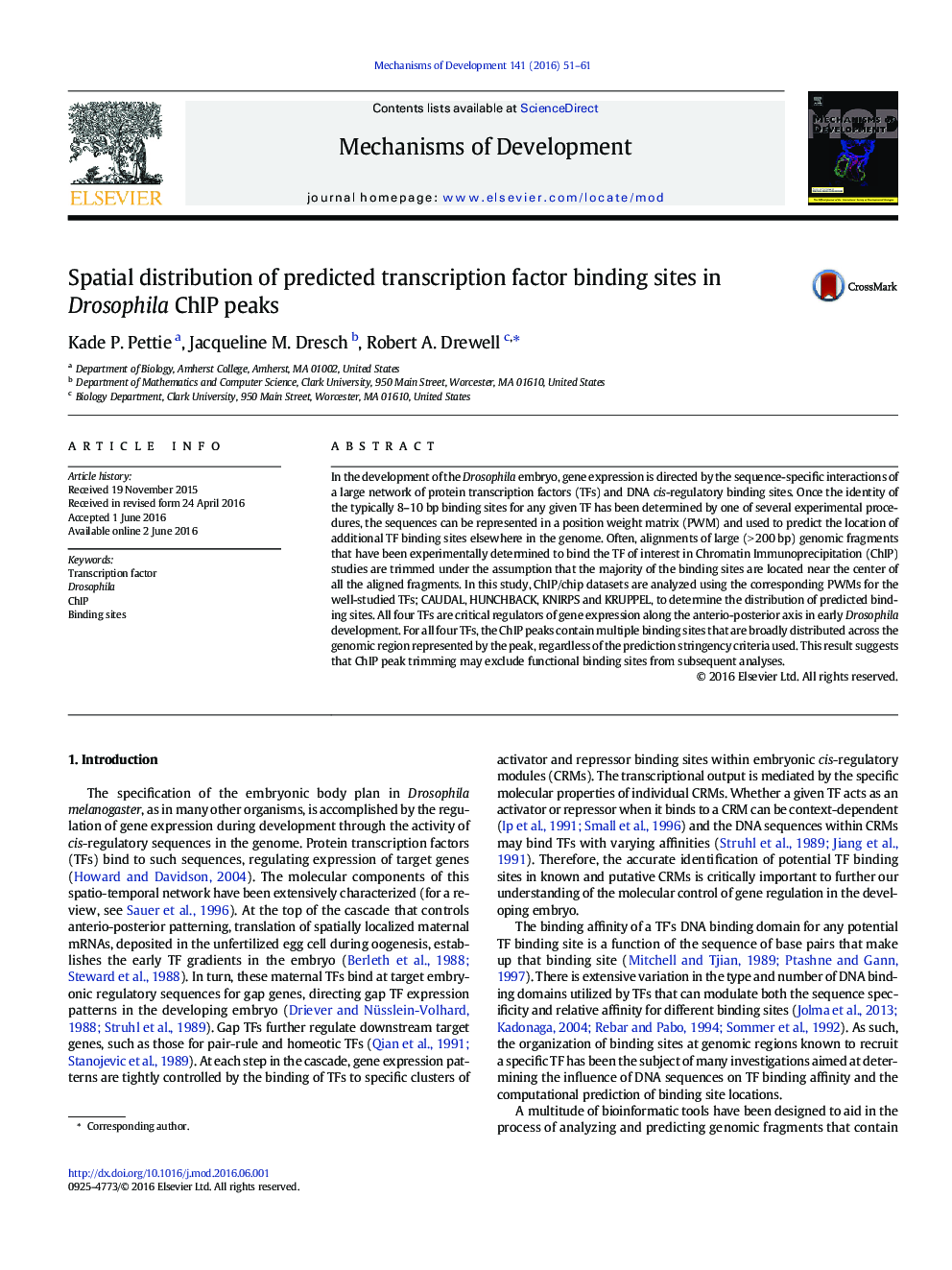| Article ID | Journal | Published Year | Pages | File Type |
|---|---|---|---|---|
| 2194511 | Mechanisms of Development | 2016 | 11 Pages |
•ChIP datasets are analyzed for CAUDAL, HUNCHBACK, KNIRPS and KRUPPEL to determine the distribution of predicted binding sites.•In all four cases the ChIP peaks contain multiple binding sites that are broadly distributed.•Trimming of ChIP peaks may result in the exclusion of functional binding sites from subsequent analyses.
In the development of the Drosophila embryo, gene expression is directed by the sequence-specific interactions of a large network of protein transcription factors (TFs) and DNA cis-regulatory binding sites. Once the identity of the typically 8–10 bp binding sites for any given TF has been determined by one of several experimental procedures, the sequences can be represented in a position weight matrix (PWM) and used to predict the location of additional TF binding sites elsewhere in the genome. Often, alignments of large (> 200 bp) genomic fragments that have been experimentally determined to bind the TF of interest in Chromatin Immunoprecipitation (ChIP) studies are trimmed under the assumption that the majority of the binding sites are located near the center of all the aligned fragments. In this study, ChIP/chip datasets are analyzed using the corresponding PWMs for the well-studied TFs; CAUDAL, HUNCHBACK, KNIRPS and KRUPPEL, to determine the distribution of predicted binding sites. All four TFs are critical regulators of gene expression along the anterio-posterior axis in early Drosophila development. For all four TFs, the ChIP peaks contain multiple binding sites that are broadly distributed across the genomic region represented by the peak, regardless of the prediction stringency criteria used. This result suggests that ChIP peak trimming may exclude functional binding sites from subsequent analyses.
